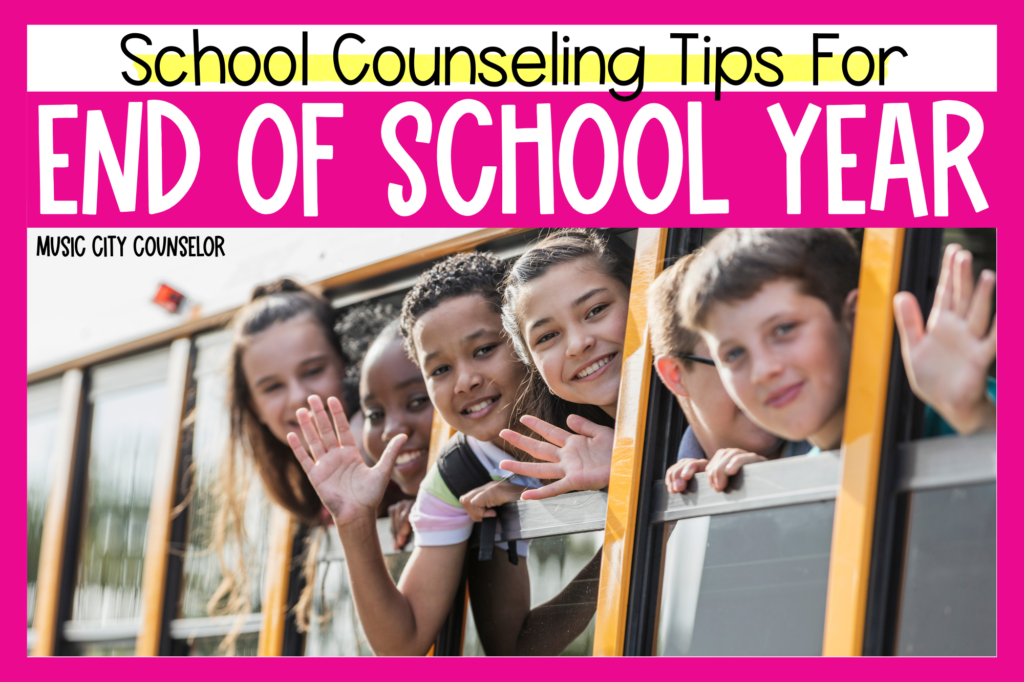
A few years ago, a 4th-grade student I had worked with regularly since kindergarten sulked into my office. Her head was down and her arms were crossed. I could tell she had been crying. She had just created a memory book with her classroom teacher when it suddenly hit her: elementary school was really over.
Among other big changes on her horizon, she realized that her daily hugs and weekly check-ins with me, her school counselor, were coming to an end. I was “her person” at school, and our relationship would change once she headed to the big middle school down the road. We sat down together in my office and both held back tears as we discussed life’s transitions, how to cope with change, and how to say goodbye. She asked who she could talk to at her new school, and what she would do without me around. I answered her questions the best I could and held space for her feelings. We wrote an email together to the counselor at her new school, and requested a meeting once the new school year began. Then we read the story, “The Invisible String” by Patrice Karst (Amazon affiliate link) and discussed how we would always be connected and together in spirit.
As you know, goodbyes are painful, and really don’t get any easier with the end of each new school year. I admit that I used to dread termination and in my early years as a school counselor, avoid it if at all possible. The tears, lingering hugs, and thought of not seeing my students each day were often too much for my sensitive soul to handle. But, in time, I grew stronger for my students and learned that it is absolutely crucial to say goodbye, formally terminate counseling services, and provide students (and ourselves!) with the closure that we need. In this post, I share my best activities and ideas to make termination more comfortable, tolerable, and memorable for all.
School Counseling Termination Tips:
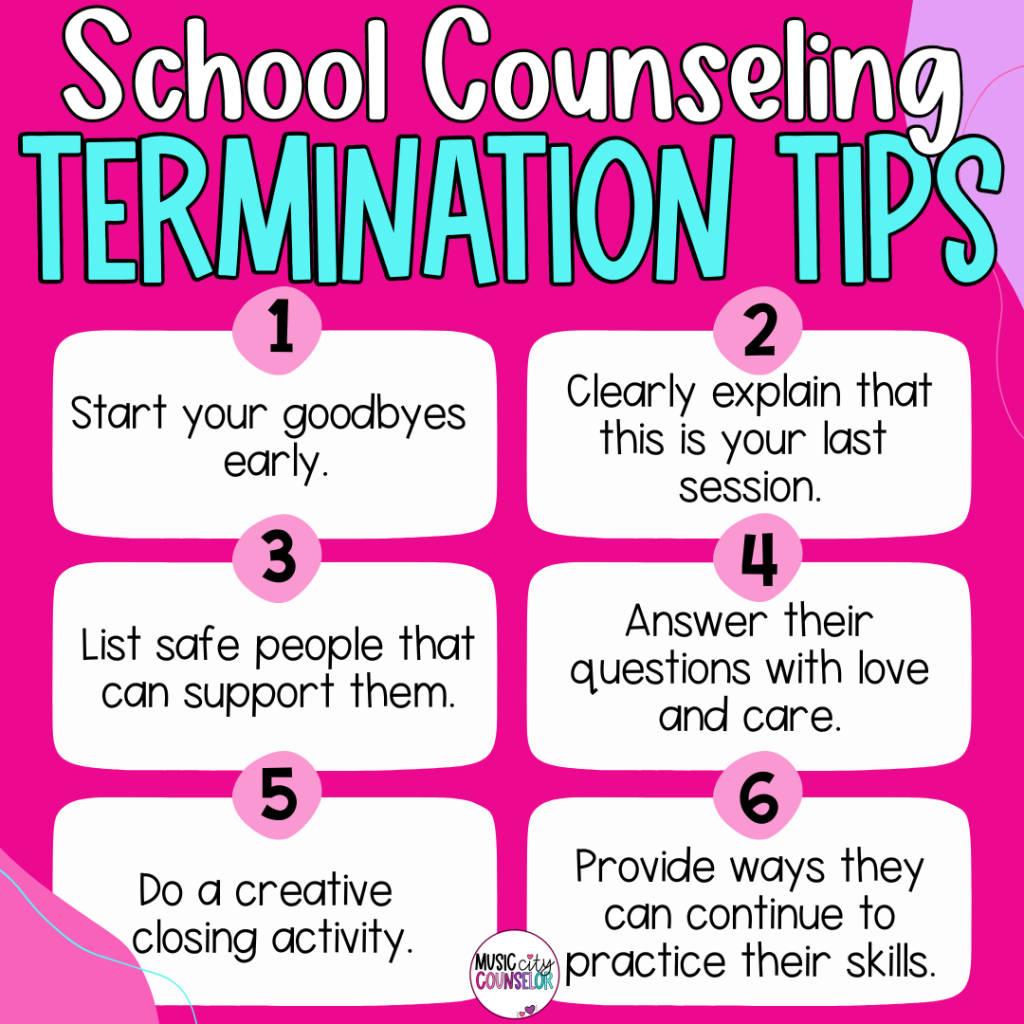
Whether it be the end of a school year, a student moving away, or the counselor leaving the building, here is some advice to help ease the discomfort and promote a positive, healing termination with students.
- If at all possible, start your goodbyes early. Giving students more time (I recommend at least two sessions) to process termination and what it means will help them feel less shell-shocked and more prepared for goodbye.
- Be clear and direct (do not sugarcoat!). Ensure that students fully understand that this is the end.
- Answer any questions the student may have.
- Offer ideas for how they can practice their skills over the summer or at their new school. You can even send a packet of activities home!
- Write a list together of safe people that can support the student over the summer and beyond. If the child is moving to a new school, you can even email the counselor at their new building together and allow the student to introduce him/herself.
- Do a creative closing activity together (some of my favorite ideas are shared below!).
- Show the child just how much you love and care, and look forward to connecting again soon (if circumstances allow, even if that means via email, snail mail, etc.)
6 Ideas for Counseling Termination Activities:
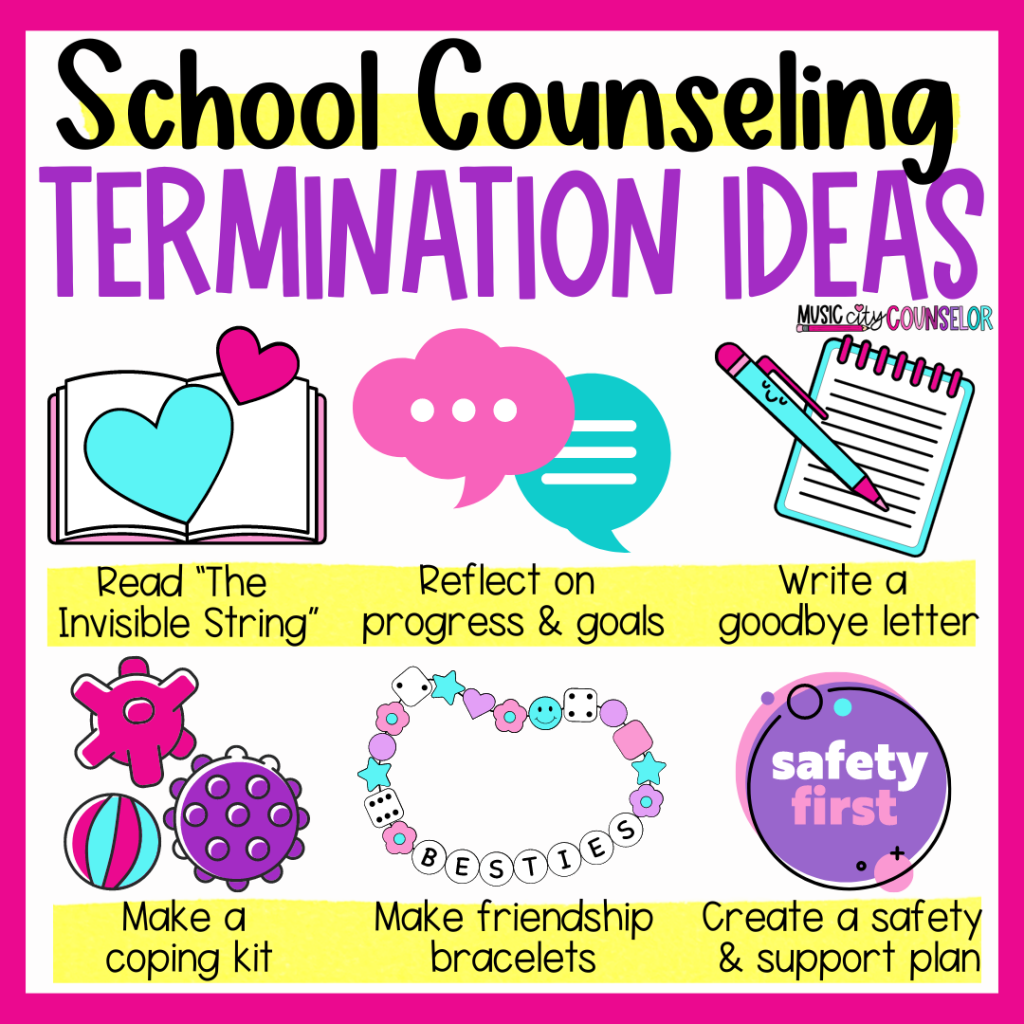
Having a variety of meaningful activities on hand can make the termination process more comfortable and less intimidating for both school counselors and their students. Here are some of my favorite tried-and-true ideas that helped make goodbyes less painful and more special:
- Read The Invisible String by Patrice Karst (Amazon affiliate link). We are all familiar with this classic story and love using it to help students cope with grief and loss…but have you considered using it for counseling termination? The book tells the story of two twins who are scared of a thunderstorm, and how their mother teaches them that they are never alone. The twins learn that even when our loved ones aren’t physically there, we are connected to them through an invisible string of love. The story helps children understand that the connections we build with others are unbreakable, no matter the distance or time between us. Not only is this story great for terminating individual and small group counseling, but I also loved using it for the last classroom lesson of the year to teach students that no matter what next school year may look like, the bonds and connections they formed this year will remain strong and present in their hearts.
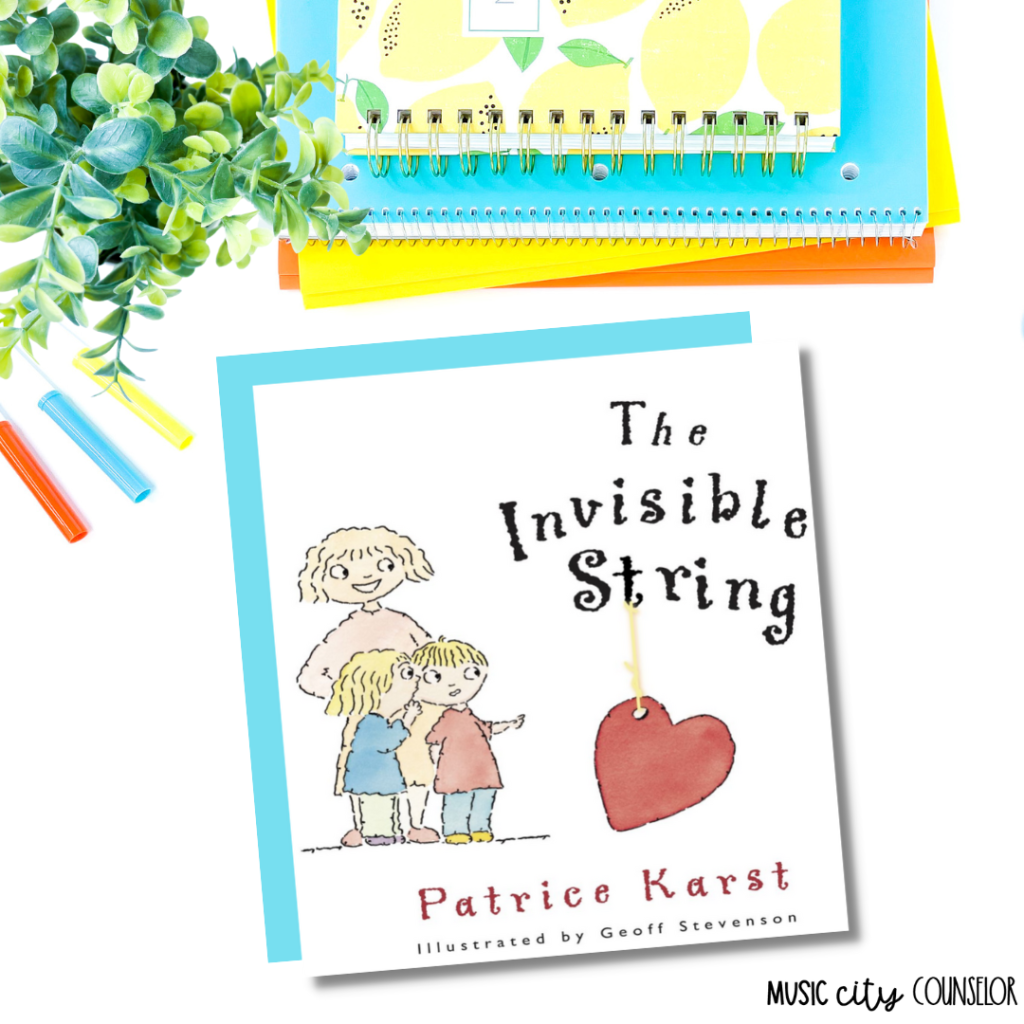
- Make friendship or “power word” bracelets. Creating jewelry that symbolizes the relationship that you have built and/or the skills and progress the child has made in counseling is a powerful experience. I loved creating friendship bracelets with students and attaching them to a keychain on my work bag to show them that we remained connected even when we weren’t physically together. And, choosing a power word such as “CALM,” “STRENGTH,” “GROWTH,” or “PEACE” and using alphabet beads to put it on a bracelet can be a great reminder to students of how far they have come, and where they are going.
- Write a goodbye letter. Writing goodbye letters helps students (and counselors) release emotions and put into words just how special this relationship and person are to them. When counselors write goodbye letters to students, it serves as a special keepsake that students can pull out and read if they are feeling alone or down. Letters written by counselors and read aloud to students can also model healthy goodbyes and teach students how to process these feelings in a productive way.
- Create a support and safety plan. Students and counselors can work together to create a support and safety plan that outlines safe people students can go to, coping skills they can practice, and what to do if a crisis arises. Students with exceptional needs will likely require a more formal plan, but something like this (free) document below can help students plan for a future without their current counselor.
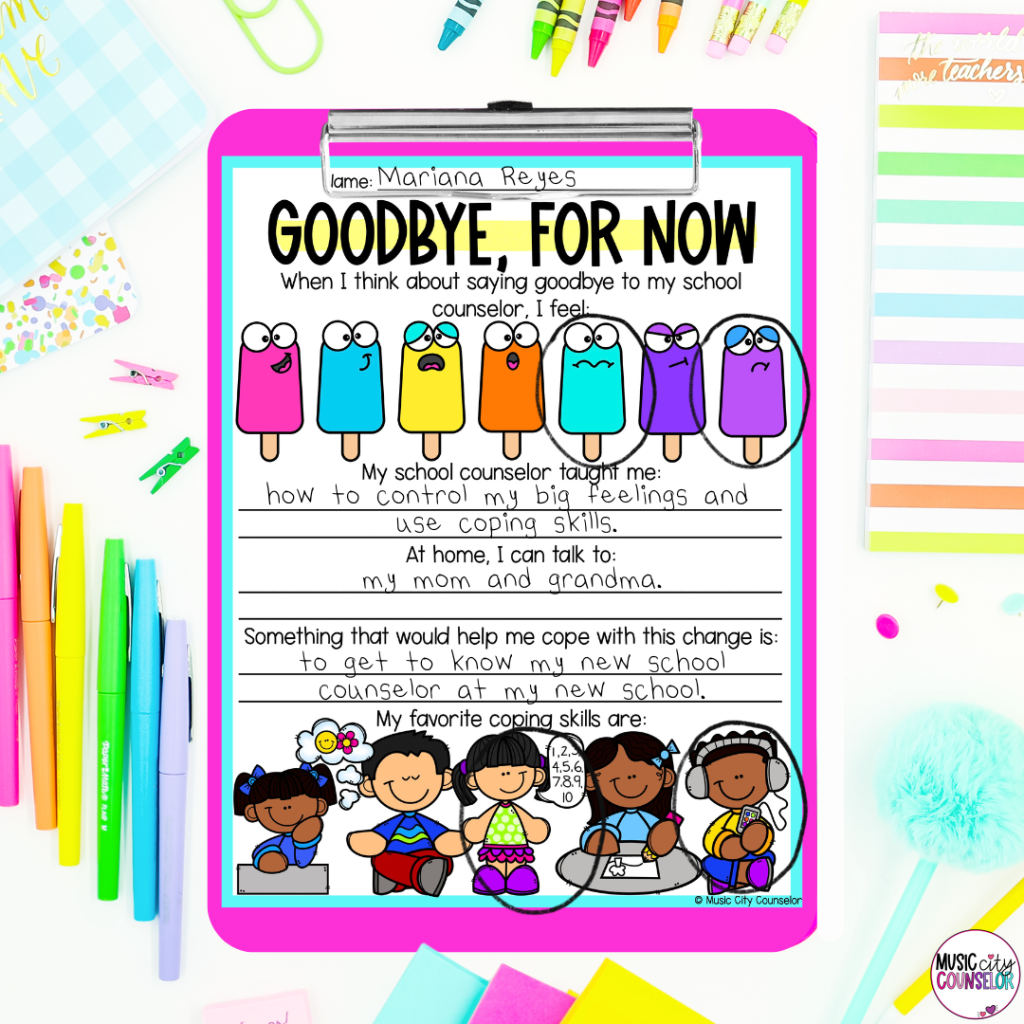
- Reflect on progress and goals. Discussing progress made and goals achieved is uplifting and confidence-building for students. It helps them realize that they DO have the tools they need to solve problems, calm down, and cope with the feelings and situations that life throws them. Another important part of the reflection process is future planning: helping students determine what they need to be successful moving forward, and who can help them get there. To make this process more purposeful and meaningful for you, I created a set of 30 FREE End of Year Discussion Cards.
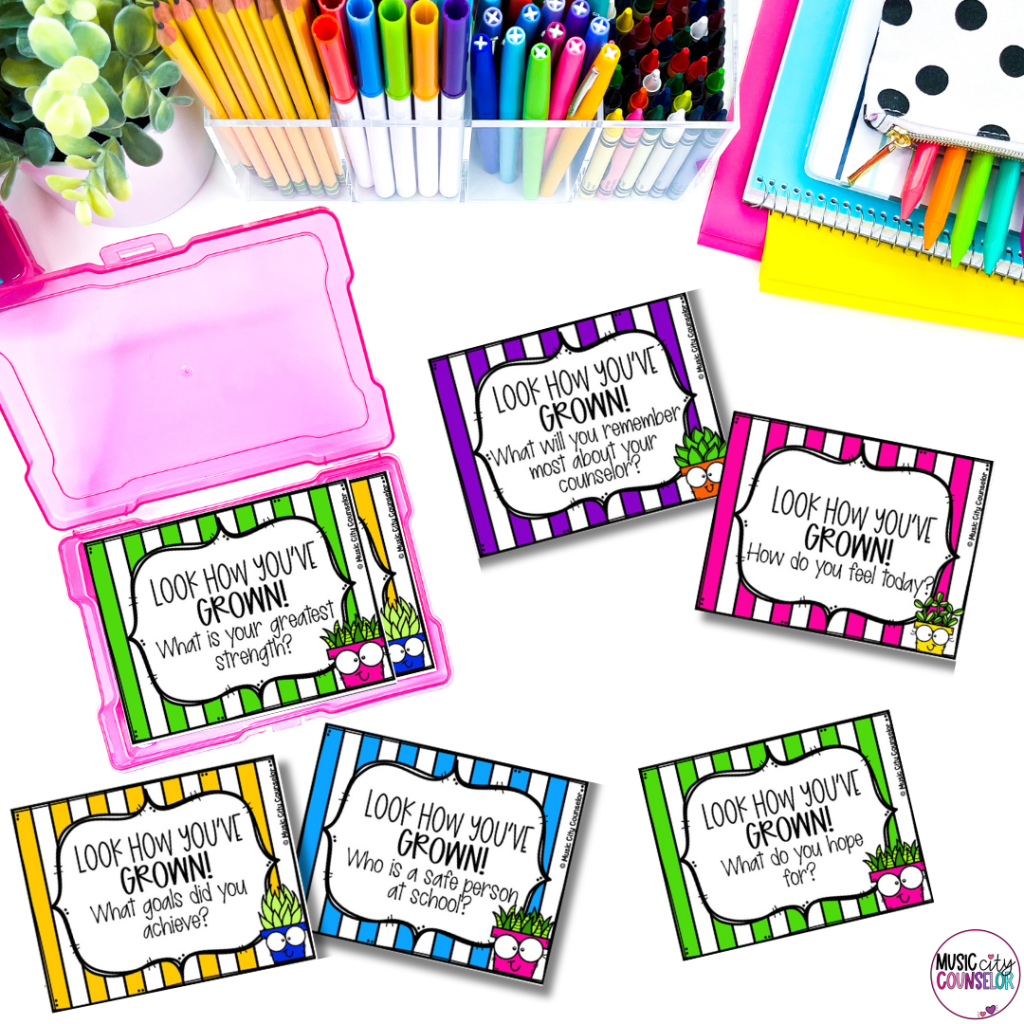
- Create a coping toolbox. Putting together a coping toolbox with students is an empowering self-help exercise in itself, and provides them with items that they can use to cope with and manage their feelings at home. You can decorate an old shoebox and gather items such as playdoh, fidgets, crayons, coloring pages, pinwheels, stress balls, bubbles, pop it toys, and anything else that can help students feel more confident and capable to self-regulate at home.
- Send counseling activities home. Parents and students really appreciate when I send relevant, easy-to-use counseling and SEL activities home on holidays, over the summer, or if a child is leaving my school. I’ll link some of my favorites below for you:
- Calm Down Lap Book: This lap book teaches students to regulate and manage their emotions. It empowers them to set a goal, identify their feelings, and choose two helpful calm down strategies. It is easily created and stored in a manila folder, so students can keep it in an accessible place and grab it as needed!
- Grief and Loss Journal: This digital & printable journal helps children understand, process, and heal as they grieve the loss of a loved one. Upper elementary students can work through it independently as they continue to process their loss over the summer (or once counseling services have ended).
- Coping with Anxiety Journal: These digital and printable resources help children identify their feelings, understand what anxiety looks and feels like in their bodies, explore their anxiety triggers, and practice helpful coping strategies. The printable activity is created in a manila folder just like the Calm Down Lap Book, so it is easy to store and pull out, too!
Evaluating School Counseling Services
In addition to terminating counseling services and providing closure for students, the end of the school year is a critical time to evaluate the effectiveness of your school counseling program. Before you “close up shop” for summer, administer a survey to your faculty. Their feedback will offer ideas, suggestions, and advice for making your program stronger than ever for the following school year…and is also a great source of data to share with your principal during your end-of-year evaluation. I created an editable School Counseling End of Year Survey which is available in both printable and digital formats. The survey questions are based on the ASCA School Counselor Professional Standards & Competencies. You can use the questions that I created, edit them, or create your own!
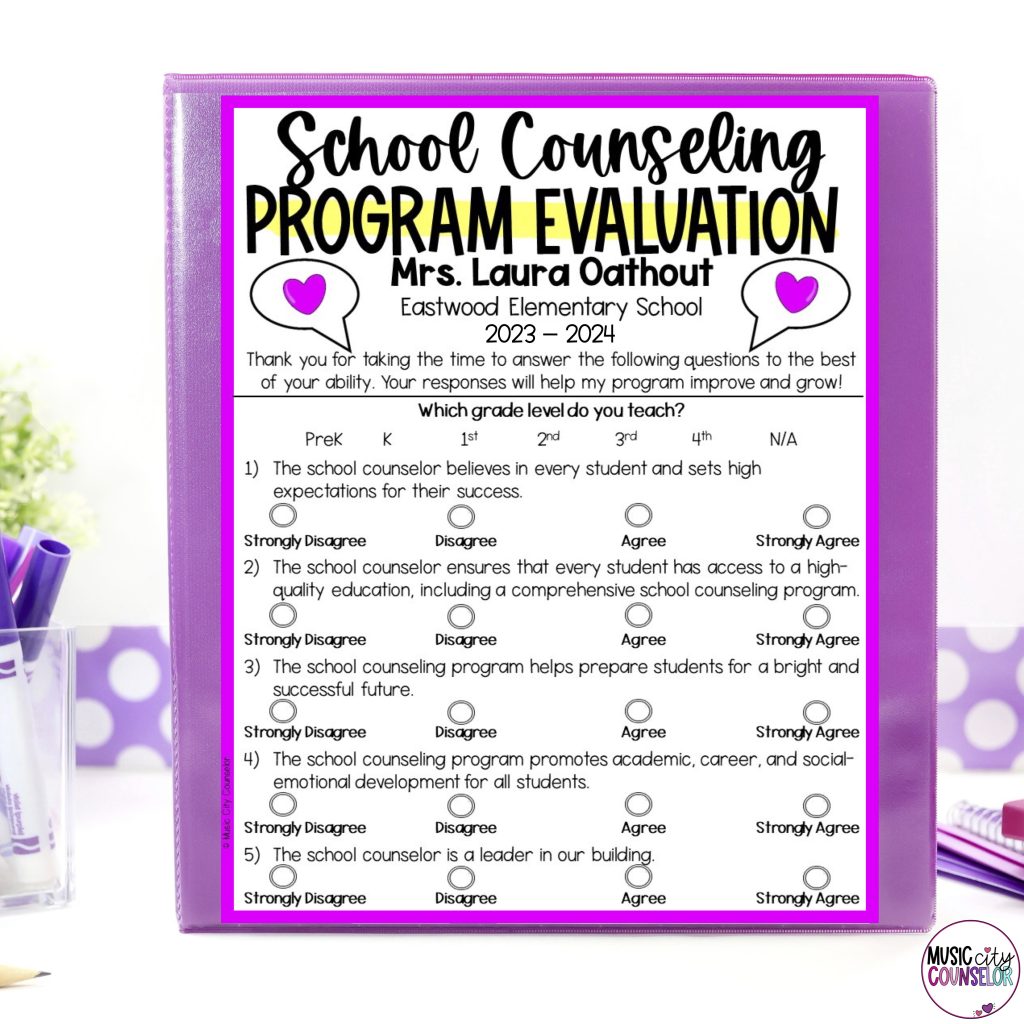
I hope that this post offered helpful strategies, ideas, and resources to terminate school counseling services and finish your school year strong. What advice do you have for other counselors who are terminating services, and what helps ease goodbyes for you and your students? Please comment below, I’d love to hear from you!
You may be interested in:
- Meet the Counselor Resources & Ideas
- “The Rabbit Listened” Meet the Counselor Lesson
- Counselor Collab Membership

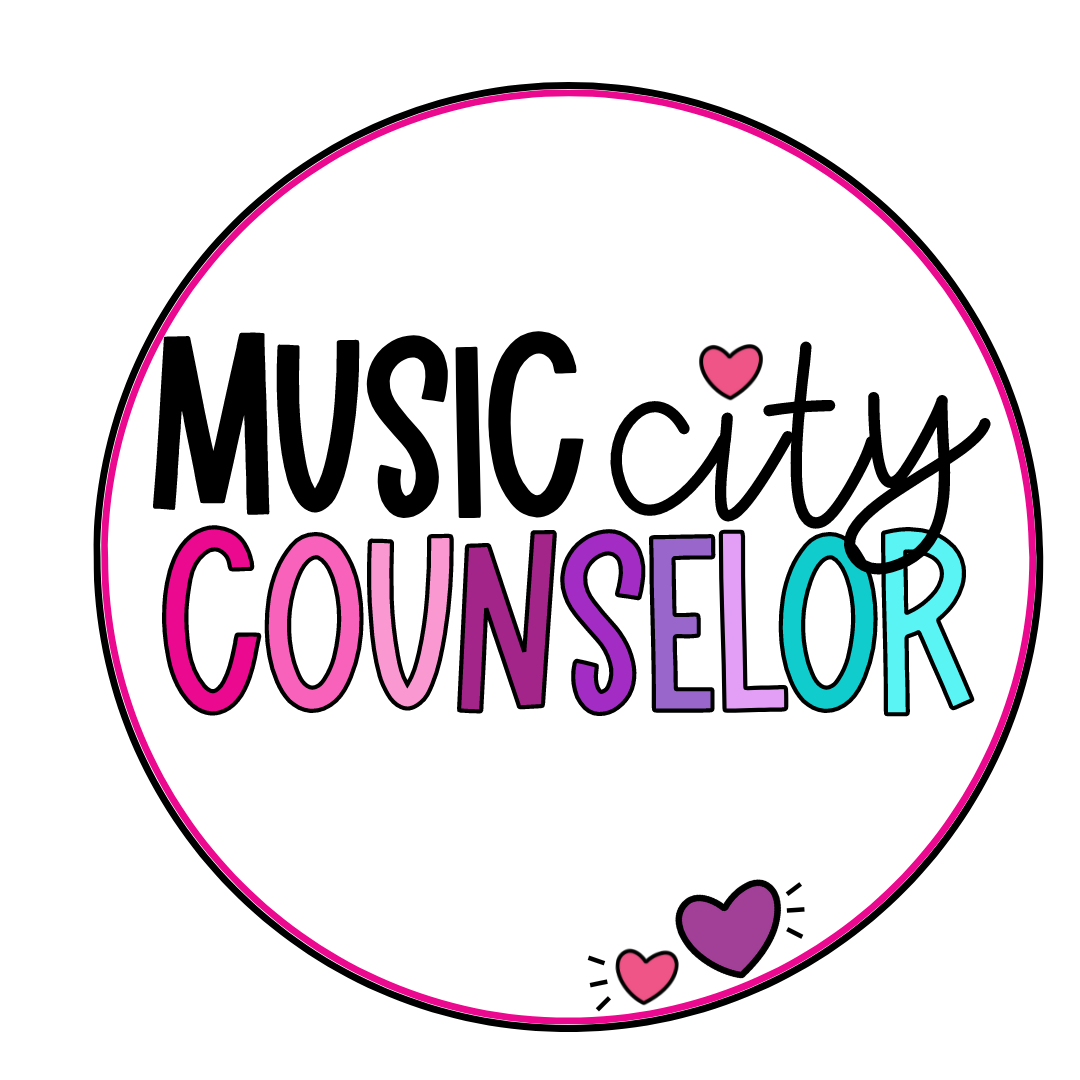

Leave a Reply